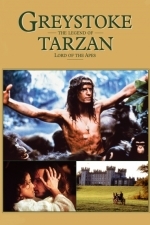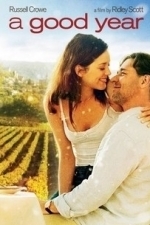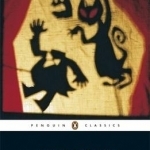Search
Search results
Awix (3310 KP) rated Greystoke: The Legend of Tarzan, Lord of the Apes (1984) in Movies
Jun 15, 2018
Umpty-tumpth Tarzan movie goes back to Burroughs and features most of the stuff you'd expect from this kind of thing: posh English couple cark it somewhere in Africa, leaving infant son to be raised by wild apes. He grows up, quickly learns to wear a loincloth so as not to outrage the censor, rediscovers his heritage, and so on.
Christopher Lambert is pretty good as the Lord of the Apes, though the script has to explain exactly why Tarzan has a French accent; Ralph Richardson and Ian Holm are really better in supporting roles, though. If the film has a problem it's that it's just a bit too downbeat and glum for a Tarzan movie - you can take gritty realism just a bit too far, and director Hugh Hudson seems determined to make serious angry points about the evils of imperialism, colonialism, and the British establishment. Still, it's probably preferable to most of the previous, ultra-silly Tarzan movies.
Christopher Lambert is pretty good as the Lord of the Apes, though the script has to explain exactly why Tarzan has a French accent; Ralph Richardson and Ian Holm are really better in supporting roles, though. If the film has a problem it's that it's just a bit too downbeat and glum for a Tarzan movie - you can take gritty realism just a bit too far, and director Hugh Hudson seems determined to make serious angry points about the evils of imperialism, colonialism, and the British establishment. Still, it's probably preferable to most of the previous, ultra-silly Tarzan movies.
JT (287 KP) rated A Good Year (2006) in Movies
Mar 10, 2020
This is certainly not your conventional Ridley Scott film, but it’s one that was well shot but not very well written. Investment broker Max Skinner (Russell Crowe) knows only one thing, how to make money. But when he inherits his Uncle’s chateau in Provence where he spent much of his childhood he must decide between the life he has in London or the life in France.
After arriving in Provence the only thing on his mind is to sell, but with childhood memories floating all around him as well as women it’s not long before the predictable is happening.It provides enough and features some telling performances but it’s simply not funny enough to register as the comedy it so desperately strives to be. The film most notably reunited Scott with Crowe and their first foray into a romantic comedy, with not a great deal of success.
A Good Year has scenery could not be more fitting for a romantic comedy, and the picturesque winery is paramount to the beautiful shots it creates. However, at times it looks more like a car advert than a film.
On the comedy aspect there are a few small laughs but they fall flat as Crowe is not able to deliver on them, you wonder if Hugh Grant might have done a better job. Crowe’s upper class English accent is out of place against the free flowing French that is predominant throughout and he’d probably feel more at home with large sword in his hand as opposed to a wine bottle.
The introduction of Uncle Henry’s supposedly long lost daughter throws a complicated spanner in the works which does more harm than good. It’s a heartwarming tale and it will tug on the heart strings of all the old romantics out there, but Scott and Crowe have never made a romantic comedy before and it certainly shows. It’s not got the characteristics of a fine wine, but may get past some peoples tastes.
After arriving in Provence the only thing on his mind is to sell, but with childhood memories floating all around him as well as women it’s not long before the predictable is happening.It provides enough and features some telling performances but it’s simply not funny enough to register as the comedy it so desperately strives to be. The film most notably reunited Scott with Crowe and their first foray into a romantic comedy, with not a great deal of success.
A Good Year has scenery could not be more fitting for a romantic comedy, and the picturesque winery is paramount to the beautiful shots it creates. However, at times it looks more like a car advert than a film.
On the comedy aspect there are a few small laughs but they fall flat as Crowe is not able to deliver on them, you wonder if Hugh Grant might have done a better job. Crowe’s upper class English accent is out of place against the free flowing French that is predominant throughout and he’d probably feel more at home with large sword in his hand as opposed to a wine bottle.
The introduction of Uncle Henry’s supposedly long lost daughter throws a complicated spanner in the works which does more harm than good. It’s a heartwarming tale and it will tug on the heart strings of all the old romantics out there, but Scott and Crowe have never made a romantic comedy before and it certainly shows. It’s not got the characteristics of a fine wine, but may get past some peoples tastes.
Sass Perilla (36 KP) rated The Master and Margarita in Books
Aug 9, 2019
Worth a read? Yes. Worth a reread? Maybe not.
Contains spoilers, click to show
The Master and Magarita: Mikhail Bulgakov
Firstly, I didn’t intend to write an essay on this novel. However, once started I found I had a lot to say, and the more I thought about the plot and characters, the more ideas and parallels were sparked, so I am hopeful that the verbosity of this review can be forgiven.
At the risk of sounding both ignorant and uncultured, I found this novel (at least at first) bloody hard slog; not least because the Russian characters have three names, plus a nickname, plus a pun on their name (none of which work particularly well in translation and all of which sound rather similar to the English untrained ear). As an example- Ivan Nikolaevich Ponyrev (who seems to be referred to by any and all of these names) is also known as “Homeless” and “the poet” is a key character in the opening section of the novel. To further demonstrate: there are 17 different names that start with A that are used to refer to 15 different characters with Andreyevich used as the middle name of a bereaved uncle, who makes a journey from Kiev after his nephew is beheaded in a freak tram accident- and Andrey the buffet manager at a Moscow theatre. Clear as mud right? And that is before starting on similarly named characters with the initials M, P, L and S! At my last count there were 45 distinct characters, and I am fairly sure there will be some that I have missed. Hence, I did a lot of re-reading to work out exactly who was doing what to whom.
Additionally, I would suggest you need to be wary of the different translations. The distinct changes in meaning are subtle but important. To triangulate I had three versions at my disposal: Hugh Aplin’s translation (available for free on Kindle), the audiobook version translated by Richard Pevear and Larissa Volokhonsky (which I listened to simultaneously when reading the book to come to my own interpretation, and the subtitles for the Russian TV miniseries from 2005 when I gave up trying to work out who was who from name alone!
So those were my “technical” issues (if you like) with engaging with this novel, and this lack of clarity and understanding (and my own lack of contextual knowledge of Stalinist Russia) meant I missed many of the (what I am sure are hysterically funny to those in the know) satirical jokes in the opening section. That said, the random action and quick changes of focus, undercurrent of chaos in Moscow despite entrenched hierarchal structures and clear threat that (any) one could go missing at any time, for an unclear reason gave a clear insight into the mind and fears of a 1930s Russian citizen. No wonder it was available only in censored form for so long.
Despite these hardships, there were some genuinely laugh out loud moments in the first Moscow based part of the novel. The citizens have not lost their individuality, as they scrabble and fight for bank notes in the theatre, which are later revealed to be worthless. Nor have they lost their sense of pride and vanity, which we see in the female theatre goers, so desperate to attain the fashionable French couture (which later literally disappears from their bodies leaving semi-naked citizenesses desperately trying to cover themselves in a scene reminiscent of “Allo Allo” meets “Benny Hill”). When Professor Woland says his show will “expose” what the locals have failed to realise is that it is their (moral) shortcomings that are about to be revealed. The message is clearly, that no government can successfully legislate against human nature.
Oooh- and another fun fact, apparently Woland (later revealed- or perhaps is implied- to be Satan) was the inspiration to the Rolling Stones 1968 hit “Sympathy for the Devil”, well at least that is what my Google-Fu tells me.
Obviously, there were substantial hurdles to leap, however, I found by the second half of the novel, when we finally meet the eponymous characters, I had got in to the swing of things and begun to embrace the farcical surrealism of the novel.
The second “book” marks a change in tone, although it continues to cut away to scenes of Jesus’ sentencing by Pilate and execution (here known in the Aramaic form Yeshua). Ironically it is these scenes that are the most “real” and substantially human, as Pilate’s decision weighs head achingly heavily on him throughout. The Master and Margarita seem to be the only two characters fully invested in the authenticity of literature, and serve as a counterpoint to the heavily censored “monstrous” writing of Ivan and the rest of the writers’ union Massolit, more interested in fine dining and what their positions can do for them then the production of quality writing.
And it is Margarita’s journey of discovery and liberation from the stodgy, miserable societal expectations of that leads her back to her Master. Bulgakov mixes classical myth, Russian folklore and Bible stories to give us an impression of the timelessness of the central romance. As the worlds of communist Moscow and the inner worlds of the Master and Margarita collide, we are informed of the former’s desire to excuse all magic (and mischief) as the product of mass hypnosis, when the latter (and the reader) are fully aware of the spiritual significance and dimension of the events.
Clever, astute and in places laugh out loud funny, this novel none-the-less requires a level of dedication from the non-Russian speaking reader. Worth a read? Yes. Worth a re-read? Maybe not.
Firstly, I didn’t intend to write an essay on this novel. However, once started I found I had a lot to say, and the more I thought about the plot and characters, the more ideas and parallels were sparked, so I am hopeful that the verbosity of this review can be forgiven.
At the risk of sounding both ignorant and uncultured, I found this novel (at least at first) bloody hard slog; not least because the Russian characters have three names, plus a nickname, plus a pun on their name (none of which work particularly well in translation and all of which sound rather similar to the English untrained ear). As an example- Ivan Nikolaevich Ponyrev (who seems to be referred to by any and all of these names) is also known as “Homeless” and “the poet” is a key character in the opening section of the novel. To further demonstrate: there are 17 different names that start with A that are used to refer to 15 different characters with Andreyevich used as the middle name of a bereaved uncle, who makes a journey from Kiev after his nephew is beheaded in a freak tram accident- and Andrey the buffet manager at a Moscow theatre. Clear as mud right? And that is before starting on similarly named characters with the initials M, P, L and S! At my last count there were 45 distinct characters, and I am fairly sure there will be some that I have missed. Hence, I did a lot of re-reading to work out exactly who was doing what to whom.
Additionally, I would suggest you need to be wary of the different translations. The distinct changes in meaning are subtle but important. To triangulate I had three versions at my disposal: Hugh Aplin’s translation (available for free on Kindle), the audiobook version translated by Richard Pevear and Larissa Volokhonsky (which I listened to simultaneously when reading the book to come to my own interpretation, and the subtitles for the Russian TV miniseries from 2005 when I gave up trying to work out who was who from name alone!
So those were my “technical” issues (if you like) with engaging with this novel, and this lack of clarity and understanding (and my own lack of contextual knowledge of Stalinist Russia) meant I missed many of the (what I am sure are hysterically funny to those in the know) satirical jokes in the opening section. That said, the random action and quick changes of focus, undercurrent of chaos in Moscow despite entrenched hierarchal structures and clear threat that (any) one could go missing at any time, for an unclear reason gave a clear insight into the mind and fears of a 1930s Russian citizen. No wonder it was available only in censored form for so long.
Despite these hardships, there were some genuinely laugh out loud moments in the first Moscow based part of the novel. The citizens have not lost their individuality, as they scrabble and fight for bank notes in the theatre, which are later revealed to be worthless. Nor have they lost their sense of pride and vanity, which we see in the female theatre goers, so desperate to attain the fashionable French couture (which later literally disappears from their bodies leaving semi-naked citizenesses desperately trying to cover themselves in a scene reminiscent of “Allo Allo” meets “Benny Hill”). When Professor Woland says his show will “expose” what the locals have failed to realise is that it is their (moral) shortcomings that are about to be revealed. The message is clearly, that no government can successfully legislate against human nature.
Oooh- and another fun fact, apparently Woland (later revealed- or perhaps is implied- to be Satan) was the inspiration to the Rolling Stones 1968 hit “Sympathy for the Devil”, well at least that is what my Google-Fu tells me.
Obviously, there were substantial hurdles to leap, however, I found by the second half of the novel, when we finally meet the eponymous characters, I had got in to the swing of things and begun to embrace the farcical surrealism of the novel.
The second “book” marks a change in tone, although it continues to cut away to scenes of Jesus’ sentencing by Pilate and execution (here known in the Aramaic form Yeshua). Ironically it is these scenes that are the most “real” and substantially human, as Pilate’s decision weighs head achingly heavily on him throughout. The Master and Margarita seem to be the only two characters fully invested in the authenticity of literature, and serve as a counterpoint to the heavily censored “monstrous” writing of Ivan and the rest of the writers’ union Massolit, more interested in fine dining and what their positions can do for them then the production of quality writing.
And it is Margarita’s journey of discovery and liberation from the stodgy, miserable societal expectations of that leads her back to her Master. Bulgakov mixes classical myth, Russian folklore and Bible stories to give us an impression of the timelessness of the central romance. As the worlds of communist Moscow and the inner worlds of the Master and Margarita collide, we are informed of the former’s desire to excuse all magic (and mischief) as the product of mass hypnosis, when the latter (and the reader) are fully aware of the spiritual significance and dimension of the events.
Clever, astute and in places laugh out loud funny, this novel none-the-less requires a level of dedication from the non-Russian speaking reader. Worth a read? Yes. Worth a re-read? Maybe not.


